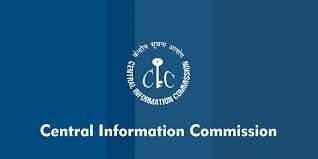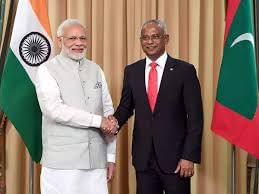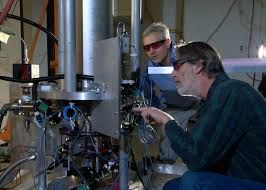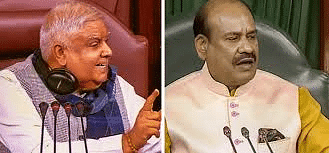UPSC Daily Current Affairs - 12th June 2024 | Current Affairs & Hindu Analysis: Daily, Weekly & Monthly PDF Download
| Table of contents |

|
| Speaker |

|
| Birsa Munda |

|
| Central Information Commission |

|
| India-Maldives Relations |

|
| Key Facts about Nitrous Oxide (N2O) Emissions |

|
| Sarod |

|
| Atomic Clock |

|
| Crete Island |

|
GS-II/Polity
Speaker
Source: Indian Express
Why in News?
As the 18th Lok Sabha prepares to meet, the TDP and JD(U), key allies of the BJP in the National Democratic Alliance (NDA), are said to be jockeying for the post of Speaker.
Speaker's Role in Parliamentary Democracy
Pro Tem Speaker and Oath Administration:
- A pro tem or temporary Speaker administers the oath to new members.
- The Speaker is subsequently chosen as the Presiding Officer of the House.
Election and Term:
- The Constitution of India provides for the offices of the Speaker and Deputy Speaker.
- Article 93 mandates their election "as soon as may be" after the commencement of the House.
- Elected by a simple majority in the House.
- Term ends with the dissolution of the House, unless resignation or removal occurs earlier.
No-confidence Motion and Disqualification:
- Article 94: A no-confidence motion against the Speaker requires 14 days' notice.
- The Speaker can be disqualified like any other member.
Qualifications and Distinctions:
- No specific qualifications for becoming Speaker.
- The post of Speaker is distinct from other members.
Salary:
- Drawn from the Consolidated Fund of India, unlike other MPs' salaries, which are voted on by the House.
Powers of the Speaker
Conducting House Business:
- The conduct of government business is decided by the Speaker in consultation with the Leader of the House.
- Prior permission of the Speaker is required for members to ask questions or discuss matters.
Questions and Records:
- The Speaker decides the admissibility of questions raised by members.
- Controls how the proceedings of the House are published.
- Has the power to expunge unparliamentary remarks.
Casting Vote:
- Article 100: The Speaker shall have a casting vote in case of an equality of votes, but not vote in the first instance.
No-confidence Motion:
- The Speaker’s impartiality is crucial during a no-confidence motion against the government.
Disqualification of Members:
- The Tenth Schedule or anti-defection law gives the Speaker the power to disqualify defecting legislators.
- Kihoto Hollohan vs. Zachillhu (1992): Supreme Court upheld the Speaker’s power, subject to judicial review.
- In 2020, the Supreme Court mandated that disqualification pleas must be decided within three months, except in extraordinary circumstances.
GS-I/History
Birsa Munda
Source: Hindustan Times

Why in news?
The Jharkhand Governor and Chief Minister recently paid tribute to tribal icon Birsa Munda on his death anniversary.
Birsa Munda: Life and Legacy
Birth and Background:
- Born: November 15, 1875, in Ulihatu village, present-day Jharkhand.
- Tribe: Munda tribe.
- Celebrated as a folk hero and tribal freedom fighter.
Role in Freedom Struggle:
- Led an Indian tribal mass movement in Bihar and Jharkhand in the early 19th century.
- Fought against British colonization and forceful land grabbing.
Birsa Munda Revolt:
- Also known as the Munda Rebellion or Ulgulan ("The Great Tumult").
- Took place in the late 19th century in the Munda belt (Khunti, Tamar, Sarwada, and Bandgaon regions).
- Declared "Ulgulan" in 1894 in response to the introduction of the Zamindari system in tribal areas.
- Fought against the British and the Dikus (outsiders).
Religious Influence:
- Founded a faith called Birsait, promoting principles of Hindu religion.
- Known as 'Dharti Abba' (Earth Father).
- Emphasized the importance of studying their own religion and preserving cultural roots.
Legacy:
- His struggle led to the Chotanagpur Tenancy Act of 1908, restricting the transfer of tribal land to non-tribals.
- The state of Jharkhand was created on his birth anniversary in 2000.
Death:
- Died on June 9, 1900, at the age of 25.
GS-II/Polity
Central Information Commission
Source: Live Law

The Delhi High Court has recently made a significant ruling regarding the jurisdiction of the Central Information Commission (CIC) over the Members of Parliament Local Area Development Scheme (MPLADS) funds.
Background:
- The court ruled that the Central Information Commission does not have the authority to comment on the utilization of MPLADS funds by Members of Parliament.
About CENTRAL INFORMATION COMMISSION (CIC):
- The Central Information Commission (CIC) is a statutory body in India, established under the provisions of the Right to Information Act (2005).
- It is not a constitutional body.
- It functions as the overseer for implementing the RTI Act in the organizations of the Central Government as well as Union Territories (UTs).
- Composition:
- The Central Information Commission consists of a Chief Information Commissioner and not more than ten Information Commissioners.
- They are appointed by the President on the recommendation of a committee consisting of:
- The Prime Minister as the Chairperson,
- The Leader of Opposition in the Lok Sabha, and
- A Union Cabinet Minister nominated by the Prime Minister.
- Qualifications of Members:
- The Chief Information Commissioner and the Information Commissioners should be persons of eminence in public life with wide knowledge and experience in Law, Science, and Technology, Social service, Management, Journalism, Mass media, Administration and governance.
- Tenure of Members:
- The tenure of the Chief Information Commissioner (CIC) and Information Commissioners in India has been a subject of change.
- As per the latest information, the tenure has been reduced from the earlier five years to now three years, or until they attain the age of 65 years, whichever is earlier.
- This amendment aligns with the government’s effort to reform the functioning of the CIC under the Right to Information (RTI) Act.
- It’s important to note that they are not eligible for reappointment after their tenure ends.
- Responsibility:
- The CIC acts upon complaints received from individuals who have been unable to submit requests of information to a Central or State Public Information Officer due to either the officer not having been appointed, or the respective officer refused to entertain the application under the Right to Information Act (RTI Act).
GS-II/International Relations
India-Maldives Relations
Source: Indian Express

Why in News?
The President of Maldives, Mohamed Muizzu, was one of seven leaders from India’s neighbourhood who attended Prime Minister Narendra Modi’s swearing-in at Rashtrapati Bhavan on June 9.
Background:
- Muizzu’s presence was significant, given the way he has positioned himself politically vis à vis India, and the crucial strategic aspect to the India-Maldives relationship.
About INDIA MALDIVES RELATIONS
- Muizzu came to power on November 17 last year on an ‘India Out’ plank.
- The India Out campaign had begun in 2020 as the Maldives opposition’s protest against then President Ibrahim Solih’s policies that were perceived to be friendly towards New Delhi, but had soon turned into a movement against India’s alleged military presence in the archipelago, which both the Solih government and India denied.
- Muizzu demanded the withdrawal of all Indian military personnel from Maldives. Consequently, the final batch of Indian soldiers — who were stationed in the Maldives to operate and maintain two helicopters and three Dornier aircraft India had previously gifted to the country were replaced by civilians in May.
- Like his mentor, former President Abdulla Yameen Abdul Gayoom, under whose rule (2013-18) the India-Maldives relationship deteriorated severely, Muizzu has openly aligned his country with China, India’s geopolitical rival in the Indian Ocean.
- The Chinese influence in the Maldives has increased steadily over the past couple of decades.
- The island nation is part of China’s Belt and Road Initiative, which has led to an influx of Chinese money and a strengthening of the relationship between the two countries — at the expense of India.
- For India, the Maldives is a crucial ally, important to secure its maritime periphery and to keep an eye on the larger Indian Ocean region where China is making aggressive moves.
- Regardless of Muizzu’s pro-China, anti-India posturing, the Maldives cannot simply “let go” of India. It is heavily dependent on Indian imports in almost all important sectors, from food to life-saving medicines, and aircraft used in search and rescue missions.
- At a time when relations between India and the Maldives are at a low, Muizzu’s visit sends an encouraging signal. Some groundwork for a reset in the relationship has been done over the past couple of months.
- In April, India approved the highest-ever export quotas for essential commodities — eggs, potatoes, onions, sugar, rice, wheat flour and pulses, river sand and stone aggregates — to Maldives for 2024-25 under a unique bilateral mechanism that has been in effect since 1981.
- Significance of Maldives for India:
- Maldives’ proximity to the west coast of India, and its location at the hub of commercial sea lanes running through the Indian Ocean imbues it with significant strategic importance to India. The security scenario in India’s periphery in the Indian Ocean is very much linked to the maritime strength of Maldives.
GS-III/Environment and Ecology
Key Facts about Nitrous Oxide (N2O) Emissions
Source: Business Standard

Why in News?
Planet-warming nitrous oxide (N2O) emissions grew by 40 percent between 1980 and 2020, according to a new report published by the Global Carbon Project.
Nitrous Oxide (N2O): Overview and Impact
Basic Characteristics:
- Chemical Formula: N₂O
- Common Names: Laughing gas, happy gas
- Properties:
- Colorless, odorless, non-flammable gas
- Supports combustion like oxygen
- Soluble in water
- Vapors are heavier than air
- Effects: Induces euphoria, hence called "laughing gas"
Applications:
- Medical Use: Sedation during minor medical and dental procedures
- Food Industry: Propellant in food aerosols
- Automotive Industry: Enhances engine performance
Environmental Impact:
- Greenhouse Gas: Third most significant after carbon dioxide (CO₂) and methane (CH₄)
- Potency: 273 times more potent than CO₂ over 100 years
- Contribution to Global Warming:
- Earth's average surface temperature increased by 1.15°C since 1850-1900
- Anthropogenic N₂O emissions contribute approximately 0.1°C of this warming
- Emission Trends:
- Emissions grew by 40% between 1980 and 2020
- Major emitters: China, India, USA (top three), followed by Brazil, Russia, Pakistan, Australia, Indonesia, Turkey, and Canada
- Sources: Agriculture (74% of emissions), industry, burning of forests/agricultural waste
- Agricultural sources include nitrogen fertilizers and animal manure
Current Atmospheric Concentration:
- In 2022, reached 336 parts per billion
- 25% higher than the 1850-1900 levels
- Significantly exceeds the predictions of the Intergovernmental Panel on Climate Change (IPCC)
GS-I/History
Sarod
Source: The Hindu

Why in News?
Sarod maestro Pandit Rajeev Taranath, who was undergoing treatment at a private hospital in Mysuru, passed away recently.
Sarod: Overview and Characteristics
Introduction:
- Type: Stringed instrument, part of the lute family
- Genre: Predominantly used in Hindustani classical music
- Accompaniment: Commonly accompanied by the tabla (drums) and tambura (drone lute)
- Origin: Adapted from the Afghan rabab in the 16th century; modern form designed in the 19th century
Design:
- Length: 100 cm
- Materials:
- Body made from hollow teak, sagwan, or tun wood
- High-quality sarods feature a body, neck, and peg box from a single piece of wood
- Resonator with a goatskin membrane and a horn bridge
- Strings: Traditionally gut or silk, now typically steel or bronze
- Structure:
- Thin bridge, similar to a violin's
- Melody strings stretched across the bridge
- Sympathetic strings run through holes in the bridge
- Neck features a polished steel plate instead of a fretboard
Playing Technique:
- Sarodiya: Term for a sarod player
- Position: Held across the seated player’s lap
- Plectrum: Strings plucked using a triangle-shaped plectrum (jawa), made from coconut shell, ebony, or horn
- String Pressing: Fingernails of the left hand press the strings
Schools and Styles:
- Ghulam Ali Khan School: One of the two prominent Indian sarod playing traditions
- Allauddin Khan School: The other major tradition
- Each school has unique playing styles, sarod designs (varying in size, shape, and string number), and tuning systems
Etymology:
- Sarod: Persian for song or melody
GS-III/Science and Technology
Atomic Clock
Source: The Hindu

Why in News?
Researchers have built a portable optical atomic clock that can be used onboard ships.
Atomic Clock: Overview and Functionality
Introduction:
- Definition: An atomic clock is a device that measures time with exceptional accuracy using the vibrations of atoms.
- Basis: Utilizes oscillations of electrons in atoms to keep time.
- Accuracy: Most accurate time-keeping device available, with an error margin of a few billionths of a second per day.
- Precision: Atomic oscillations have a higher frequency and greater stability than conventional clock mechanisms.
Applications:
- GPS Systems: Essential for accurate positioning and navigation.
- Telecommunications Networks: Provides precise timing for data transmission.
- Scientific Research: Used in experiments and measurements requiring high precision.
How It Works:
- Atom Type: Uses cesium atoms due to their stability and specific vibration frequency.
- Microwave Cavity: A chamber filled with cesium vapor.
- Microwave Signal: Sent into the cavity to cause cesium atoms to vibrate.
- Radiation Emission: As cesium atoms vibrate, they emit radiation at a specific frequency.
- Detection and Comparison:
- A detector measures the emitted frequency.
- Compares it to a standard frequency.
- Adjusts the clock based on the frequency difference.
Types of Atomic Clocks:
- Cesium Atomic Clocks:
- Most common type.
- Basis for Coordinated Universal Time (UTC).
- Hydrogen Maser Atomic Clocks:
- Even more accurate than cesium atomic clocks.
- Primarily used in scientific research.
GS-I/Geography
Crete Island
Source: Arkeonews

Why in News?
During excavations for an airport on Greece’s largest island of Crete, a large circular monument dating back 4000 years was unearthed.
About Crete Island:
- It is the largest island in Greece and the fifth largest one in the Mediterranean Sea.
- It is located in the southern part of the Aegean Sea (an arm of the Mediterranean Sea).
- It is bordered by the Sea of Cretein the north, the Libyan Sea in the south, the Myrtoan Sea in the west, and the Carpathian Sea in the east.
- It covers an area of 8,336 sq. km.
- It is relatively long and narrow, stretching for about 260 km east-west and about 60 km at its widest point.
- The island is dominated by rugged mountains that crisscross from west to east.
- The highest point on the island is Ida, also known as Psiloritis, at 2,456 m.
- History:
- The island of Crete has been inhabited since the Paleolithic Age by early hominids.
- The earliest advanced European civilization, the Minoan Civilization, started on the island around 2700-1420 BCE.
- The Minoan civilization ended after a major earthquake, and thereafter, the island’s rule was taken over by the Mycenaean civilization.
- The island was then subsequently ruled by the Romans, the Byzantines, the Andalusians, the Venetians, and the Ottomans.
- After the island’s independence from Ottoman rule, Crete became a part of Greece.
- During the Second World War, the island was occupied by the Nazi German forces and also served as the battleground of the famous “Battle of Crete.”
|
55 videos|5389 docs|1141 tests
|
FAQs on UPSC Daily Current Affairs - 12th June 2024 - Current Affairs & Hindu Analysis: Daily, Weekly & Monthly
| 1. What is the significance of Birsa Munda in Indian history? |  |
| 2. How does the Central Information Commission contribute to transparency in India? |  |
| 3. What are the key aspects of India-Maldives relations? |  |
| 4. What are some key facts about Nitrous Oxide (N2O) emissions? |  |
| 5. How does an Atomic Clock work and why is it important? |  |
















